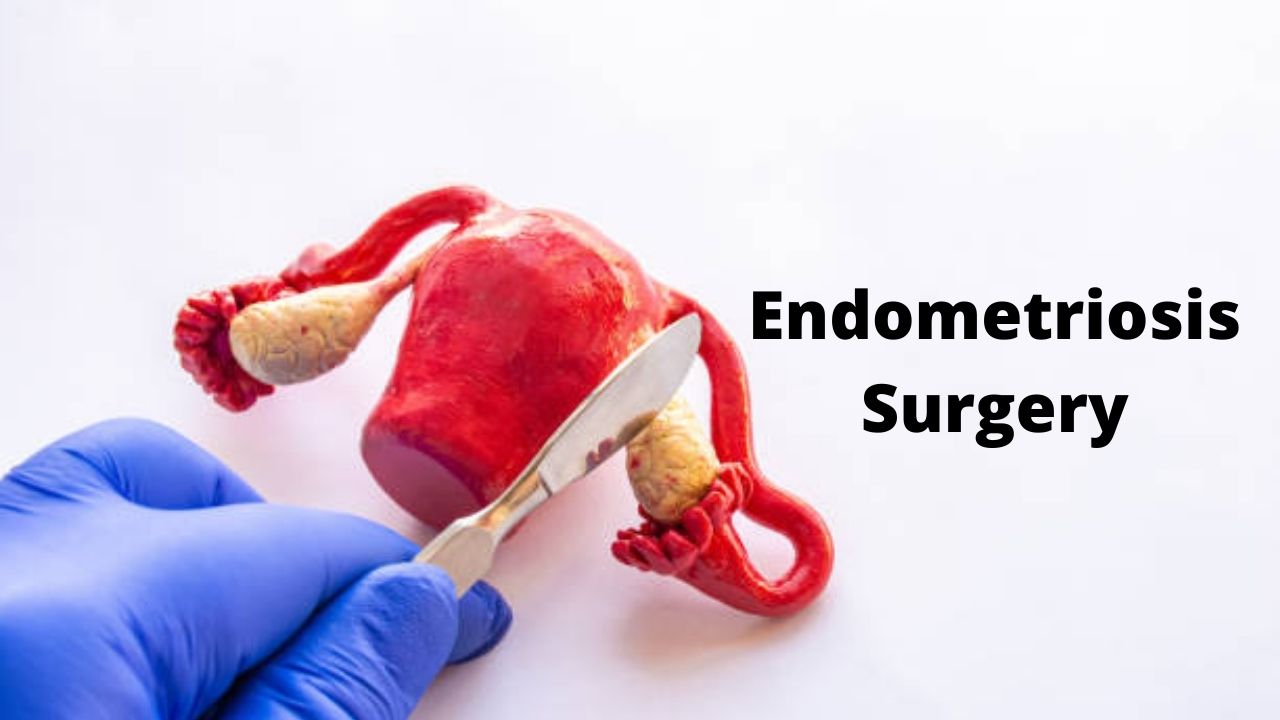Endometriosis surgery is indicated for women who suffer from infertility or who do not wish to have children, since in the most serious cases, it may be necessary to remove the ovaries or the uterus, directly affecting the woman’s fertility. In this way, surgery is always recommended in cases of deep endometriosis, in which treatment with hormones does not generate any type of result and where there may be a risk to the woman’s life.
Endometriosis surgery is performed in most cases with video laparoscopy, which consists of making small holes in the abdomen to insert instruments that allow removing or burning the endometrial tissue that is damaging other organs, such as: ovaries, external region of the uterus, bladder or intestines.
On the other hand, in cases of mild endometriosis, although rare, surgery can also be performed in conjunction with other types of treatment to increase fertility through the destruction of small pockets of endometrial tissue that are growing outside the uterus. and making pregnancy difficult.
What is endometriosis?
As we have said, endometriosis is a benign disease that can affect 10-15% of women and is one of the main causes of pelvic pain. It consists of the appearance of endometrial tissue (tissue that forms the lining of the uterus) in other areas of the pelvis and, sometimes, outside of it. As main symptoms it produces intense pain and alterations of fertility. In addition, if it is not correctly diagnosed and treated, it can have serious consequences for women.
Treatment of endometriosis
The treatment of endometriosis is based on two lines of action; according to the response, the presence of symptoms and the severity of the disease.
Hormone treatment
The first line of medical treatment is hormonal treatment, based on contraceptive preparations. This hormonal treatment will aim to eliminate menstruation, leaving the patient in amenorrhea. In this first line of treatment, the use of hormonal drugs with analgesics will be supported, to avoid or limit the pain caused by endometriosis.
Endometriosis surgery

In a second line, we find a series of surgical procedures that can help treat the disease. Endometriosis surgery encompasses different interventions. In the first place, we find a series of more conservative endometriosis surgeries : on the tubes, the ovaries or to eliminate the different nodules that may be in the abdominal cavity or in different regions of the pelvis. On the other hand, we find the most radical form of endometriosis surgery which would be hysterectomy. That is, remove the uterus completely.
Laparoscopic surgery for endometriosis
Laparoscopy is the most common procedure used to diagnose and remove mild to moderate endometriosis. Instead of using a large abdominal incision, the surgeon inserts a lighted viewing instrument called a laparoscope through a small incision. If the surgeon needs better access, he will make one or two additional small incisions to insert other surgical instruments.
If your doctor recommends laparoscopy, he or she will do so to:
• Look at internal organs for signs of endometriosis and other possible problems. This is the only way to accurately diagnose endometriosis. However, a diagnosis of “no endometriosis” is never certain. The growths (implants) may be tiny or hidden from the surgeon’s view.
• Remove any visible endometriosis implants and scar tissue that could be causing pain or infertility. If an endometriosis cyst is found growing on an ovary (endometrioma), it will likely be removed.
Laparoscopic procedure
You will be instructed not to eat or drink anything for at least 8 hours before your laparoscopy. Laparoscopy is usually done under general anesthesia, although you may stay awake if you have local anesthesia or spinal anesthesia. A gynecologist or surgeon will perform the procedure.
To do a laparoscopy, the abdomen is inflated with air. Air, injected through a needle, pushes the abdominal wall away from the organs so the surgeon can see them more clearly. The surgeon then inserts a laparoscope through a small incision and examines the internal organs. Additional incisions may be made to insert instruments to move organs and structures for better viewing. The procedure usually lasts 30 to 45 minutes.
If endometriosis or scar tissue needs to be removed, your surgeon will use one of several techniques, including cutting and removing tissue (excision) or destroying it using a laser beam or electrical current (electrocautery).
After the procedure, the surgeon will close the abdominal incisions with a few stitches. Typically, little or no scarring occurs.
What to expect?
Laparoscopy is usually done in an outpatient setting. Sometimes the surgery requires a hospital stay of 1 day. You will probably be able to go back to your usual activities in 1 week or maybe a little longer.
Why is it done?
Laparoscopy is used to examine the pelvic organs and to remove implants and scar tissue. This procedure is often used to examine and treat:
- Severe endometriosis and scar tissue thought to be interfering with internal organs, such as the intestines or bladder.
- Endometriosis pain that has continued or returned after hormone therapy.
- The severe pain of endometriosis (some women and their doctors choose to skip drug treatment).
- An endometriosis cyst in an ovary (endometrioma).
- Endometriosis as a possible cause of infertility. The surgeon usually removes any visible implants and scar tissue. This can improve fertility.
Situations in which laparoscopy may not be necessary
Direct observation of the pelvic organs is the only way to confirm if you have endometriosis. But this is not always necessary. When endometriosis is suspected, hormone therapy is often indicated.
Effectiveness :
Pain relief
As with hormone therapy, surgery relieves the pain of endometriosis for most women. However, it does not guarantee long-lasting results. Some studies have shown that:
- Most women—between 60 and 80 out of 100—report pain relief in the first few months after surgery.
- More than 50 out of 100 women have symptoms that return within 2 years after surgery. This figure increases over time.
Some studies suggest that using hormone therapy after surgery can lengthen the pain-free period by preventing the growth of new endometriosis or its recurrence.
Sterility
If infertility is your primary concern, your doctor will likely use laparoscopy to detect and remove signs of endometriosis.
- Research has not strongly shown that removing mild endometriosis improves fertility.
- For moderate to severe endometriosis, surgery will improve your chances of pregnancy.
- In some severe cases, a fertility specialist will recommend that you avoid surgical removal and use in vitro fertilization instead.
After the laparoscopy, the next steps will depend on the severity of your endometriosis and your age. If you are over 35, the quality of your eggs worsens and the risk of miscarriage increases with each passing year. In that case, your doctor may recommend infertility treatment, such as fertility drugs, insemination, or IVF. If you are younger, consider trying to conceive without infertility treatment.
Endometrioma
There are several ways to treat an endometrioma surgically, including draining it, removing part of it, or removing it completely (cystectomy). Any of these treatments offers pain relief for most women, but not all. Cystectomy is more likely to relieve pain longer, prevent an endometrioma from growing back, and prevent the need for another surgery.
When is endometriosis surgery indicated?
Endometriosis surgery is indicated, above all, for patients who, despite following correct hormonal medical treatment, persist with pain. Another group of patients for whom endometriosis surgery would be indicated are those with a more severe stage of the disease. For example, patients who present intestinal occlusive symptoms due to the presence of an intestinal nodule. Another example would be patients with urinary tract involvement with consequent kidney damage. In these two cases, the presence of symptoms would not be necessary to decide to perform endometriosis surgery.
Surgery for endometriosis is indicated when the woman presents severe symptoms that can directly interfere with the woman’s quality of life, when drug treatment is not enough or when other alterations in the endometrium or in the reproductive system as such are determined.
In this way, according to the age and severity of the endometriosis, the doctor can choose to perform conservative or definitive surgery:
• Conservative surgery: its objective is to preserve the fertility of women, being performed more frequently in women of reproductive age and who wish to have children. In this type of surgery, only the foci of endometriosis and adhesions are removed.
• Definitive surgery: it is indicated when treatment with drugs or through conservative surgery is not enough, and it is often necessary to remove the uterus and/or ovaries.
Conservative surgery is normally performed through video laparoscopy, which is a simple procedure that must be performed under general anesthesia, in which small holes or cuts are made near the navel that allow the entry of a small tube with a microcamera and the medical instruments that allow the removal of the foci of endometriosis.
On the other hand, in the case of definitive surgery, the procedure is known as a hysterectomy and is performed with the aim of removing the uterus and associated structures according to the extent of the endometriosis. The type of hysterectomy to be performed by the doctor varies according to the severity of the endometriosis.
The cost depends on the type of surgery, and may vary according to the extent of the procedure and the need to remove an organ.
Possible risks of endometriosis surgery
The risks of endometriosis surgery are mainly related to general anesthesia and, for this reason, when the woman is not allergic to any type of medication, the risks are generally quite small.
Complications from endometriosis surgery are rare, but include:
- Pelvic infections.
- Uncontrolled bleeding that requires a larger abdominal incision (laparotomy) to stop the bleeding.
- Formation of scar tissue (adhesions) after surgery.
- Damage to the intestines, bladder, or ureters (the small tubes that carry urine from the kidneys to the bladder).
Also, as with any surgery, there is a risk of developing an infection. In this way, it is advisable to go to the emergency room when a fever above 38ºC appears, very strong pain appears in the area of the surgery, swelling arises in the area of the stitches or there is increased redness in the area of the surgery.
Recovery after endometriosis surgery
Surgery for endometriosis is performed under general anesthesia in a hospital, which is why hospitalization is necessary for at least 24 hours to evaluate if there is any bleeding and fully recover from the effect of anesthesia; however, it may be necessary to stay longer in the hospital if a hysterectomy has been performed.
Although the hospitalization time is not long, the time for complete recovery after surgery for endometriosis can vary between 14 days to 1 month, and during this period it is recommended:
- Rest at home, not being necessary to stay in bed constantly.
- Avoid excessive efforts, such as working, cleaning the house or lifting objects that weigh more than 1 kilo.
- Do not perform physical exercise during the first month after surgery.
- Avoid sexual intercourse during the first 2 weeks.
Likewise, it is important to eat a light and balanced diet, as well as drink around 1.5 liters of water a day to speed up recovery. During the recovery period, it may be necessary to make some regular visits to the gynecologist to check the progress of the surgery and evaluate its results.
Can you have children after endometriosis surgery?
After endometriosis surgeries, patients CAN have children. However, for this to be the case, the gynecological surgeon must perform conservative surgery. To do this, the uterus must be respected during surgery. In most cases, patients can get pregnant spontaneously. However, on occasion, patients have to undergo assisted reproduction techniques.
